Linda saved his life – 18 years later, she ignores the warnings and the unimaginable happens
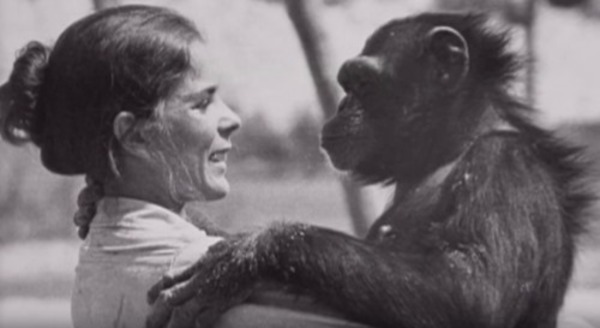
When Linda Koeb returned to the animal reserve, she wasn’t sure her old friends would recognize her.
After all, it had been 18 years since she released Swing and Doll into the wild.
Linda met the two chimpanzees when she was a 23-year-old student.
Swing and Doll had been just been been released from a lab, where they were subjected to countless tests.
Linda spent the next four years rehabilitating them. But one day, the two chimpanzees were ready for their new life on the reserve.
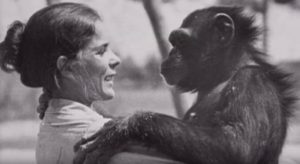
Linda saved his life – 18 years later, she ignores the warnings and the unimaginable happens
When Linda Koeb returned to the animal reserve, she wasn’t sure her old friends would recognize her.
After all, it had been 18 years since she released Swing and Doll into the wild.
Linda met the two chimpanzees when she was a 23-year-old student.
Swing and Doll had been just been been released from a lab, where they were subjected to countless tests.
Linda spent the next four years rehabilitating them. But one day, the two chimpanzees were ready for their new life on the reserve.
After spending so many years in captivity, it was difficult for Swing and Doll to get used to their new climate.
Linda was worried they wouldn’t be able to handle such a big change.
She remembers watching the chimpanzees as they were released into the reserve. Because Swing and Doll had spent six years at the laboratory, Linda was nervous.
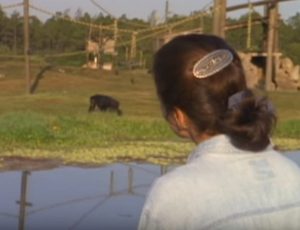
But with the help of Linda’s love and care, Swing and Doll slowly adapted to a happy life in their new environment.
Eighteen years later, Linda came back to see the friends she spent four years caring for.
In the video, Linda walks over to the chimpanzees, unsure whether they’ll recognize her
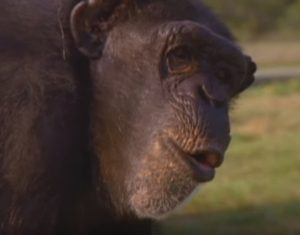
The animal breeders weren’t sure it was safe to let Linda visit Swing and Doll. Chimpanzees are powerful animals and can be aggressive.
But after seeing this reunion, no one can deny that these animals also have incredibly strong feelings and memories…
Check out the wonderful reunion here:
Although they had been separated for 18 years and hadn’t had any contact, Swing and Doll’s bond with Linda is clearly unbreakable.
Studies show that chimpanzees understand more than we think. And not unlike us, they kiss, hug, shake hands, and clench their fists.
Who says chimpanzees can’t love someone who saved their lives? Please share this video on Facebook so that all your friends can also watch this beautiful meeting!
The human-chimp bond captured in an iconic photo
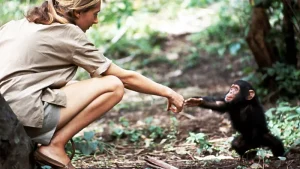
In 1964, Jane Goodall’s husband Hugo van Lawick took a photo of her and an infant chimp reaching out to each other. Decades later, it continues to impact how we view chimpanzees.
On 14 July 1960, 26-year-old Jane Goodall arrived by boat to the shores of Lake Tanganyika, Tanzania. Here, in what is now Gombe Stream National Park, her ground-breaking scientific research into chimpanzee behaviour began.
Previously a secretarial student without an undergraduate degree in science, Goodall says she observed her wild subjects with an open mind and without preconceptions. Controversially at the time, she defied convention by giving these chimps names instead of numbers.
One image taken of Goodall during this time captured her fresh approach, challenged the scientific norm and has become one of the world’s most recognisable photos.
Her late husband, Dutch photographer Hugo van Lawick, went to Gombe in 1962 where he took thousands of photographs of Goodall. But it was in 1964 that he took what became an iconic photograph of Goodall with an infant chimp known as Flint.
In the photo, Goodall is shown crouching down and reaching out with her right arm to Flint, the first chimp to be born at Gombe after Goodall’s arrival, as he extends his left arm up towards her.
As Goodall tells BBC Future, this was long before the era of digital photography, so she had to wait a while before she could see the printed images. “It was couple of months or more before there was a safe way to send exposed rolls to the [National] Geographic for processing, and then another wait while they sent the prints back to Kigoma,” she recalls. “When I saw it, though I did not realise it would become iconic, it did make me think of Michelangelo’s painting of God reaching out to Man.”
